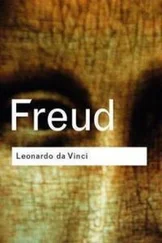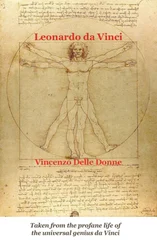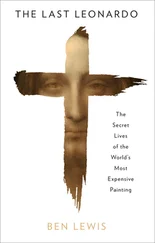Leonardo da Vinci - The Notebooks of Leonardo Da Vinci. Complete
Здесь есть возможность читать онлайн «Leonardo da Vinci - The Notebooks of Leonardo Da Vinci. Complete» — ознакомительный отрывок электронной книги совершенно бесплатно, а после прочтения отрывка купить полную версию. В некоторых случаях можно слушать аудио, скачать через торрент в формате fb2 и присутствует краткое содержание. Жанр: foreign_prose, foreign_home, visual_arts, foreign_antique, на английском языке. Описание произведения, (предисловие) а так же отзывы посетителей доступны на портале библиотеки ЛибКат.
- Название:The Notebooks of Leonardo Da Vinci. Complete
- Автор:
- Жанр:
- Год:неизвестен
- ISBN:нет данных
- Рейтинг книги:3 / 5. Голосов: 1
-
Избранное:Добавить в избранное
- Отзывы:
-
Ваша оценка:
- 60
- 1
- 2
- 3
- 4
- 5
The Notebooks of Leonardo Da Vinci. Complete: краткое содержание, описание и аннотация
Предлагаем к чтению аннотацию, описание, краткое содержание или предисловие (зависит от того, что написал сам автор книги «The Notebooks of Leonardo Da Vinci. Complete»). Если вы не нашли необходимую информацию о книге — напишите в комментариях, мы постараемся отыскать её.
The Notebooks of Leonardo Da Vinci. Complete — читать онлайн ознакомительный отрывок
Ниже представлен текст книги, разбитый по страницам. Система сохранения места последней прочитанной страницы, позволяет с удобством читать онлайн бесплатно книгу «The Notebooks of Leonardo Da Vinci. Complete», без необходимости каждый раз заново искать на чём Вы остановились. Поставьте закладку, и сможете в любой момент перейти на страницу, на которой закончили чтение.
Интервал:
Закладка:
42
All the problems of perspective are made clear by the five terms of mathematicians, which are:—the point, the line, the angle, the superficies and the solid. The point is unique of its kind. And the point has neither height, breadth, length, nor depth, whence it is to be regarded as indivisible and as having no dimensions in space. The line is of three kinds, straight, curved and sinuous and it has neither breadth, height, nor depth. Hence it is indivisible, excepting in its length, and its ends are two points. The angle is the junction of two lines in a point.
43
A point is not part of a line.
44
OF THE NATURAL POINT.
The smallest natural point is larger than all mathematical points, and this is proved because the natural point has continuity, and any thing that is continuous is infinitely divisible; but the mathematical point is indivisible because it has no size.
[Footnote: This definition was inserted by Leonardo on a MS. copy on parchment of the well-known "Trattato d'Architettura civile e militare" &c. by FRANCESCO DI GIORGIO; opposite a passage where the author says: _'In prima he da sapere che punto č quella parie della quale he nulla—Linia he luncheza senza ŕpieza; &c.]
45
1, The superficies is a limitation of the body. 2, and the limitation of a body is no part of that body. 4, and the limitation of one body is that which begins another. 3, that which is not part of any body is nothing. Nothing is that which fills no space.
If one single point placed in a circle may be the starting point of an infinite number of lines, and the termination of an infinite number of lines, there must be an infinite number of points separable from this point, and these when reunited become one again; whence it follows that the part may be equal to the whole.
46
The point, being indivisible, occupies no space. That which occupies no space is nothing. The limiting surface of one thing is the beginning of another. 2. That which is no part of any body is called nothing. 1. That which has no limitations, has no form. The limitations of two conterminous bodies are interchangeably the surface of each. All the surfaces of a body are not parts of that body.
Of the line (47-48).
47
DEFINITION OF THE NATURE OF THE LINE.
The line has in itself neither matter nor substance and may rather be called an imaginary idea than a real object; and this being its nature it occupies no space. Therefore an infinite number of lines may be conceived of as intersecting each other at a point, which has no dimensions and is only of the thickness (if thickness it may be called) of one single line.
HOW WE MAY CONCLUDE THAT A SUPERFICIES TERMINATES IN A POINT?
An angular surface is reduced to a point where it terminates in an angle. Or, if the sides of that angle are produced in a straight line, then—beyond that angle—another surface is generated, smaller, or equal to, or larger than the first.
48
OF DRAWING OUTLINE.
Consider with the greatest care the form of the outlines of every object, and the character of their undulations. And these undulations must be separately studied, as to whether the curves are composed of arched convexities or angular concavities.
49
The nature of the outline.
The boundaries of bodies are the least of all things. The proposition is proved to be true, because the boundary of a thing is a surface, which is not part of the body contained within that surface; nor is it part of the air surrounding that body, but is the medium interposted between the air and the body, as is proved in its place. But the lateral boundaries of these bodies is the line forming the boundary of the surface, which line is of invisible thickness. Wherefore O painter! do not surround your bodies with lines, and above all when representing objects smaller than nature; for not only will their external outlines become indistinct, but their parts will be invisible from distance.
50
Definition of Perspective.
[Drawing is based upon perspective, which is nothing else than a thorough knowledge of the function of the eye. And this function simply consists in receiving in a pyramid the forms and colours of all the objects placed before it. I say in a pyramid, because there is no object so small that it will not be larger than the spot where these pyramids are received into the eye. Therefore, if you extend the lines from the edges of each body as they converge you will bring them to a single point, and necessarily the said lines must form a pyramid.]
[Perspective is nothing more than a rational demonstration applied to the consideration of how objects in front of the eye transmit their image to it, by means of a pyramid of lines. The Pyramid is the name I apply to the lines which, starting from the surface and edges of each object, converge from a distance and meet in a single point.]
[Perspective is a rational demonstration, by which we may practically and clearly understand how objects transmit their own image, by lines forming a Pyramid (centred) in the eye.]
Perspective is a rational demonstration by which experience confirms that every object sends its image to the eye by a pyramid of lines; and bodies of equal size will result in a pyramid of larger or smaller size, according to the difference in their distance, one from the other. By a pyramid of lines I mean those which start from the surface and edges of bodies, and, converging from a distance meet in a single point. A point is said to be that which [having no dimensions] cannot be divided, and this point placed in the eye receives all the points of the cone.
[Footnote: 50. 1-5. Compare with this the Proem. No. 21. The paragraphs placed in brackets: lines 1-9, 10-14, and 17—20, are evidently mere sketches and, as such, were cancelled by the writer; but they serve as a commentary on the final paragraph, lines 22-29.]
51
IN WHAT WAY THE EYE SEES OBJECTS PLACED IN FRONT OF IT.
The perception of the object depends on the direction of the eye.
Supposing that the ball figured above is the ball of the eye and let the small portion of the ball which is cut off by the line s t be the pupil and all the objects mirrored on the centre of the face of the eye, by means of the pupil, pass on at once and enter the pupil, passing through the crystalline humour, which does not interfere in the pupil with the things seen by means of the light. And the pupil having received the objects, by means of the light, immediately refers them and transmits them to the intellect by the line a b . And you must know that the pupil transmits nothing perfectly to the intellect or common sense excepting when the objects presented to it by means of light, reach it by the line a b; as, for instance, by the line b c . For although the lines m n and f g may be seen by the pupil they are not perfectly taken in, because they do not coincide with the line a b . And the proof is this: If the eye, shown above, wants to count the letters placed in front, the eye will be obliged to turn from letter to letter, because it cannot discern them unless they lie in the line a b; as, for instance, in the line a c . All visible objects reach the eye by the lines of a pyramid, and the point of the pyramid is the apex and centre of it, in the centre of the pupil, as figured above.
[Footnote: 51. In this problem the eye is conceived of as fixed and immovable; this is plain from line 11.]
Читать дальшеИнтервал:
Закладка:
Похожие книги на «The Notebooks of Leonardo Da Vinci. Complete»
Представляем Вашему вниманию похожие книги на «The Notebooks of Leonardo Da Vinci. Complete» списком для выбора. Мы отобрали схожую по названию и смыслу литературу в надежде предоставить читателям больше вариантов отыскать новые, интересные, ещё непрочитанные произведения.
Обсуждение, отзывы о книге «The Notebooks of Leonardo Da Vinci. Complete» и просто собственные мнения читателей. Оставьте ваши комментарии, напишите, что Вы думаете о произведении, его смысле или главных героях. Укажите что конкретно понравилось, а что нет, и почему Вы так считаете.












